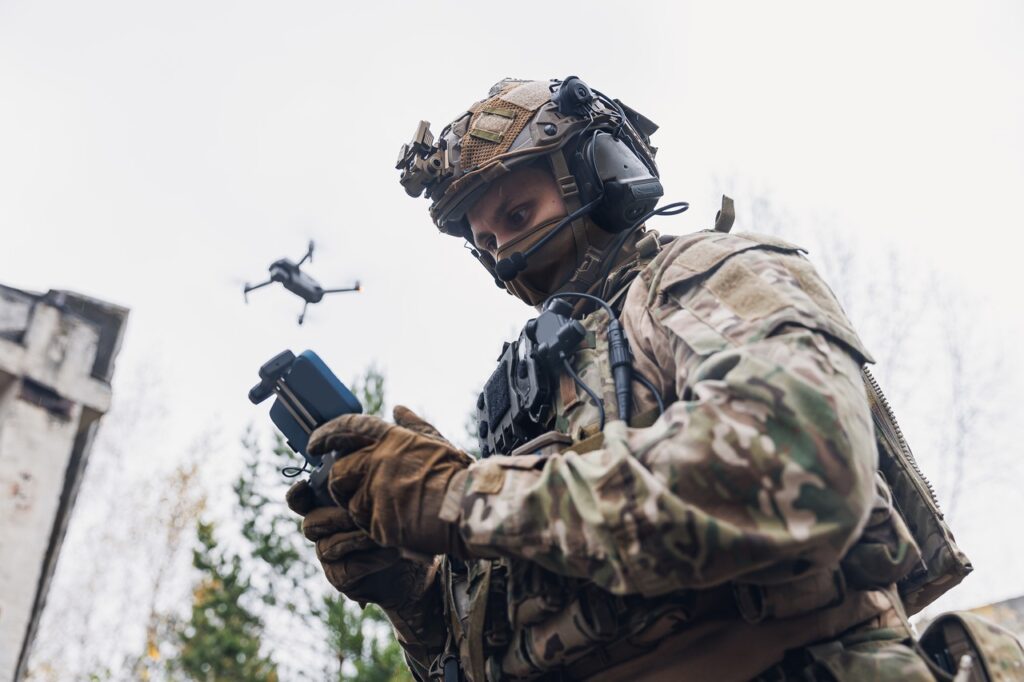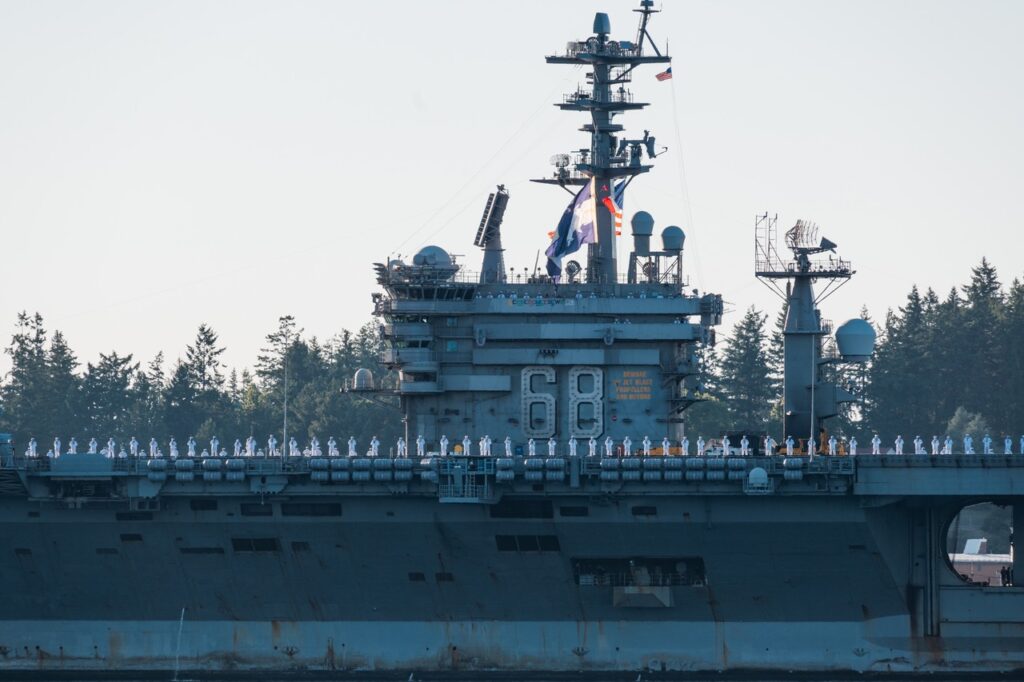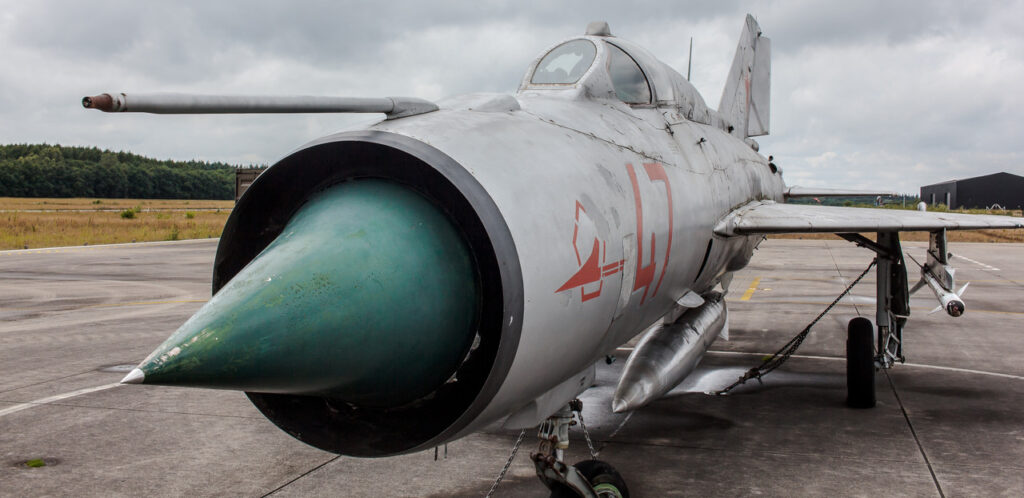
Northrop’s F-23 Stealth Fighter Would Have Been a Killer. (And Japan Might Be Interested In It.)
In fact, the Air Force’s sixth-generation stealth fighter project, Penetrating Counter Air, emphasizes long range over maneuverability—and Lockheed’s proposed design happens to bear an uncanny resemblance to the YF-23.
Japan has been seeking foreign partners to help develop an F-3 air-superiority oriented stealth fighter for its Air Self-Defense Force. The concept that has attracted by far the most public interest is Lockheed Martin’s proposal for a hybrid of the F-22 Raptor, the world’s top air warfare platform, and the newer F-35 Lightning II. However, some commentators believe the F-3 program could see a resurrection of sorts for the F-22’s rival of yore: the Northrop YF-23 Black Widow II—an aircraft many believe would have surpassed even the Raptor’s impressive performance.
(This first appeared last month.)
In 1981, the Pentagon debuted the Advanced Tactical Fighter (ATF) competition seeking a next-generation stealth fighter that was not only low-observable on radar, but that could also beat new Soviet Su-27 Flanker and MiG-29 Fulcrum fighters in a dogfight. This was a major leap, as the only stealth aircraft yet developed, the F-117 Nighthawk, didn’t possess air-to-air weaponry or supersonic flight capability. The Air Force also wanted the ATF to be capable of super-cruise, sustained supersonic flight without using fuel-gulping afterburners—a challenge given that jet engines fan blades often prove to be an Achilles heel when trying to reduce radar cross-section.
In 1986, competitors for the ATF program were narrowed down to Lockheed-Martin and Northrop, which were then instructed to produce YF-22 and YF-23 prototypes of their respective designs to face off in a competition four years later. By then, both companies had some experience with stealth aircraft design, Lockheed having manufactured the F-117 and Northrop involved in the subsequent B-2 stealth bomber. Northrop also involved McDonnel-Douglas as a sub-contractor.
Lockheed’s YF-22 possessed striking looks, but the YF-23, dubbed the Black Widow II, was truly otherworldly, with diamond-shaped wings to reduce radar observability and a very thin side profile evocative of the SR-71 Blackbird spy plane. Two huge rear tail fins were canted far outwards at a 50 degree angle above the wing, and were rotated by a fly-by-wire system to induce yaw, roll and pitch.
Northrop built two prototypes: the dark grey PAV-1 “Spider” (initially, it even had a Black Widow’s trademark red hourglass on its belly), which first flew June 1990, and the light grey PAV-2 “Grey Ghost” that took to the sky that October. While the former used the same Pratt & Whitney F119 turbofan as the Raptor, the latter used a General Electric YF120 variable-cycle engine which could switch between turbojet and turbofan modes for better low and high-speed performance respectively. The engine inlets used S-Ducts to minimize radar cross section, while heat signature was reduced by channeling exhaust down trenches of heat-absorbent tiles.
The YF-23 prototypes were tested for 65 flight hours. Both had in-flight refueling receptacles and a weapon bay that could accommodate four AIM-120 long-range missiles. Production aircraft would have also incorporated a single 20-millimeter Vulcan cannon and a bay to carry two more short-range Sidewinders missiles. Both YF-22 and YF-23 prototypes did no yet include key systems avionics such as radars.
However, the YF-23 lacked one key feature of the Raptor: heavier vector-thrust engines which could rotate horizontally to assist in executing tight maneuvers at low speed. Thus, the Raptor came to be considered the more maneuverable of the two planes. In reality YF-23 was hardly a slouch in terms of agility, capable of attaining angles of attack sixty or seventy degrees above the vector of the plane even without vector thrust propulsion, but apparently only 25-degree maneuvers were performed before Air Force testers.
In fact, the YF-23 reportedly scored ahead of the Raptor in most categories—demonstrating higher sustained supersonic super-cruise capabilities and longer range. Furthermore, it had an even lower Radar Cross Section, particularly from the side and rear, further reducing the range at which it could be detected.
Recommended: Forget the F-35: The Tempest Could Be the Future
Recommended: Why No Commander Wants to Take On a Spike Missile
Recommended: What Will the Sixth-Generation Jet Fighter Look Like?
Recommended: Imagine a U.S. Air Force That Never Built the B-52 Bomber
Some sources familiar with the competition allege that the Lockheed Martin team simply did a better job of showcasing the YF-22’s agility to an evaluation team primarily composed of fighter pilots schooled in traditional dogfighting. Another may be that the YF-23 was believed to be more expensive and risky—and the Raptor would already prove exceptionally pricy at between $137 to 150 million per plane. The YF-22 was also reportedly more polished, and the Pentagon may have been skeptical of Northrop’s project management capabilities due to the delays and skyrocketing costs of its B-2 stealth bomber. Some even claim the contract was awarded to Lockheed to keep the company afloat.
Ironically, were the Air Force given the choice today between greater maneuverability or longer range and greater stealth, it would almost certainly choose the latter. This is because theorists believe future air wars may be fought primarily beyond visual range—making detection capability rather than agility the most important factor. Furthermore, reliance upon short-range fighters constrains them to operating from forward bases highly exposed to enemy missile attacks—and these days the Air Force must contemplate operations over the expanses of the Pacific Ocean.
In fact, the Air Force’s sixth-generation stealth fighter project, Penetrating Counter Air, emphasizes long range over maneuverability—and Lockheed’s proposed design happens to bear an uncanny resemblance to the YF-23.
Of course, Northrop’s YF-23 tech didn’t simply vanish after the loss of the competition. Over a decade later, Northrop tried pitching a revised YF-23 for a proposed medium-range stealth bomber, though ultimately the Air Force ended up choosing Northrop long-range B-21 instead in 2016. Today, the PAV-1 can be seen at the U.S. Air Force Museum in Dayton, while PAV-2 is on display at the Western Museum of Flight in California.
In 2018, Tokyo’s inquiries to potential partners in its F-3 stealth fighter program reportedly received an enthusiastic response from Northrop-Grumman. While Northrop might seek to revive the YF-23, more likely that it would offer unique aspects of the airframe and engine design which might then be integrated with new or existing Japanese technologies.
This is because many aspects of Northrop’s 1980s-era design would need upgrading, particularly the old-fashioned Radar Absorbent Material coatings—which remain highly expensive on the F-22 compared to the modular panels on the newer F-35—and the avionics, which were never really developed into a mature system. Still, the Japanese Self Defense Force might prefer to start with the basis of an existing and tested airframe and subsequently improve upon it, instead of starting from scratch. This could mean that nearly three decades later, the Black Widow and Raptor may be pitted against each other in a second competition.
Sébastien Roblin holds a master’s degree in conflict resolution from Georgetown University and served as a university instructor for the Peace Corps in China. He has also worked in education, editing and refugee resettlement in France and the United States. He currently writes on security and military history for War Is Boring .


